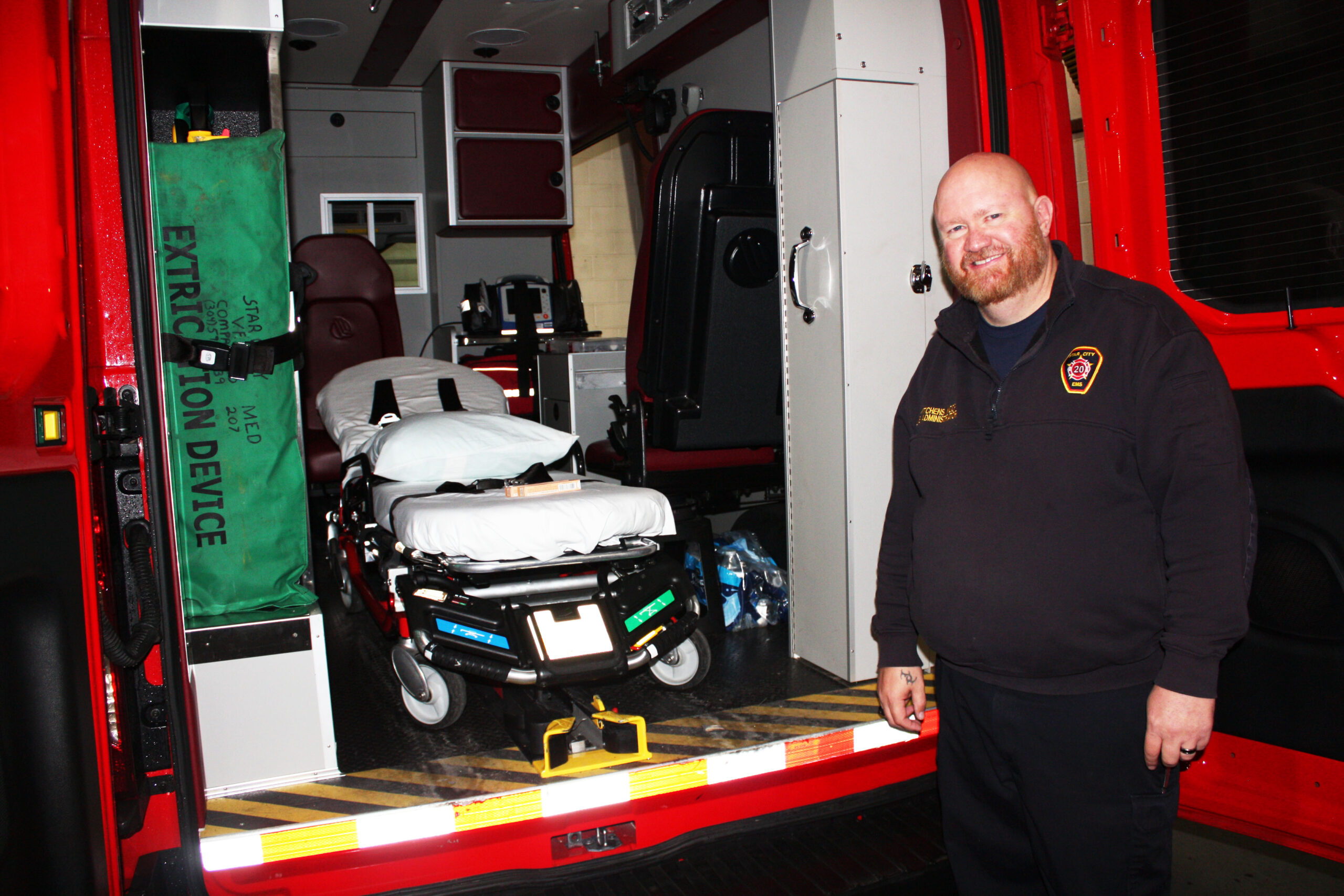As a 23-year emergency medical responder, Chief John Hitchens has seen the number of patients who overdose on opioids skyrocket. Monongalia County currently ranks fifth among West Virginia counties for opioid deaths.
“Over the years, it’s progressively gotten worse,” said Hitchens, a paramedic and the emergency medical services administrator for Star City Fire & EMS. “I can remember when I first started as a paramedic, we had very few opioid-related overdoses in the course of a month. We would have a handful of those calls. Now, in some cases, it’s almost a 50% volume that you run that are some sort of overdose call.”
Some advancements have been made. For instance, between its release in 1961 until 2015, naloxone, which reverses the effects of an opioid overdose, could only be administered intravenously.
That meant that among first responders, only paramedics, who can start IVs, could relieve a patient’s symptoms with it immediately instead of waiting until the patient got to the hospital.
“Now it has been atomized, which has been tremendous,” Hitchens said of the now-popular type of naloxone that works as a nasal spray. That means anyone can administer it, from all first responders and law enforcement to the friends and family of someone who overdoses.
Besides, he added, it can be difficult to find a good vein to use on a patient who is an IV drug user.
Not only do all the Star City EMS personnel carry naloxone in their ambulances, but fire trucks are also equipped with the lifesaving medication.
Another positive step in the opioid crisis is Hitchens’ participation in Monongalia County Health Department’s Quick Response Team, funded by a $230,000 grant from the West Virginia Department of Health and Human Resources. The group, consisting of MCHD employees, first responders, law enforcement, peer recovery coaches and other community stakeholders, meets weekly to address ways to alleviate the opioid crisis.
“QRT is something that is important to me,” Hitchens said. “It’s a big thing and I’m glad to be part of it.”
A major goal of the QRT is to connect people who have overdosed with services they need. This process begins when overdose reports are sent by MECCA 911, first responders and law enforcement to a HIPAA-compliant Dropbox. Peer recovery coaches (PRCs), who have lived experience with addiction, follow up with those individuals to discuss treatment options as well as other types of help, such as naloxone and social services.
Hitchens appreciates being able to work with PRCs Jon Dower and Dan McCawley of WV PEERS, he noted.
“We’ve been able to refer people to someone who is very good at what they do,” said Hitchens. “That help is there. We’re able to effect some of that change and that’s what makes our involvement a success.”
Dower returned the compliment. “John Hitchens is invaluable to our efforts as a QRT,” he said. “He sees the solution as more than just responding to overdose calls. He understands the interventions that need to take place to help people suffering from substance use disorders find the help they need to stay alive and find a path to wellness. His compassion is more than evidence in his dedication to his work and our work as a team.”
That does not mean the job of a paramedic has gotten any easier in the face of the drug use going on in the area. Another scenario Hitchens has seen on the upswing is repeat patients who continue to overdose and require help.
“It’s common to see the same patient multiple times,” he said. “It’s disheartening to sometimes see a patient more than once that has overdosed.”
But previously, once EMS got the patient to the hospital, its job was done.
“There was never an outlet until QRT that we could try and effect some change.”
In addition to repeat patients, first responders also are dealing with what Hitchens refers to as “higher-acuity” calls. That’s because many times, opioids are being laced or cut with other types of drugs, such as fentanyl, which can make an overdose even more dangerous.
“It’s technically more difficult to handle,” Hitchens said. “They don’t always know what they are taking on.”
Even as the numbers of patients remain steady, in part, Hitchens believes, because of newcomers pouring into Morgantown, he can tell some success stories that help keep him motivated. That includes one about a person with substance use disorder who had been the subject of a few EMS calls.
“He had gone to rehab and he was clean and doing well,” Hitchens said. “But after he got through all that, he was in the same situation that had gotten him addicted to drugs. It was his home environment. Jon and Dan were able to give him some options to get out of the environment and help him stay clean.”
And in spite of repeat calls to the same patients, Hitchens and his staff continue to help anyone they can.
“When I started coming to QRT, from the beginning, once I met with my staff and told them what we were going to try to do, I’ve had zero pushback from anyone,” he said.
“They are eager to let me know when they go out on calls so I can get the reports submitted. They are happy to be an overall part of the picture. I wish we could get everyone at every agency on the same page. It’s a successful thing that we are doing.”
TWEET @DominionPostWV




